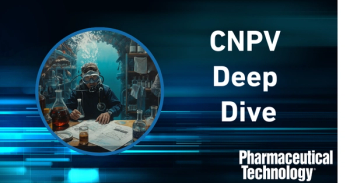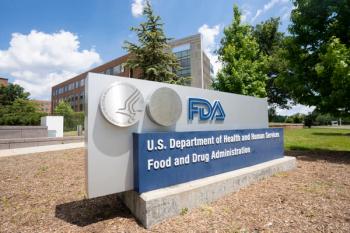
- Pharmaceutical Technology-11-02-2019
- Volume 43
- Issue 11
Investigating NDMA Impurities at EMA’s Request
Companies are facing a huge undertaking to be able to complete risk evaluations of all medicines containing chemically synthesized APIs by March 2020.
Editor’s Note: This article was published in Pharmaceutical Technology Europe’s November 2019 print issue.
The European Medicines Agency (EMA) and the European Union’s national licensing authorities have taken the unusual step of requesting that pharma companies investigate the production processes for all medicines containing chemically synthesized active substances for the possible presence of nitrosamines, which are classified as probable human carcinogens (1). Many pharma companies, therefore, face a massive task of completing risk evaluations of their production processes and suppliers, including producers of starting materials, by March 2020.
The EU measures follow an EMA recommendation in January 2019 that companies making sartan blood pressure medicines-also known as angiotensin II receptor blockers-reassess their production processes to avoid the creation of nitrosamine impurities (2). This action was preceded by the discovery in mid-2018 that Zhejiang Huahai, a Chinese drug manufacturer, was making a sartan medicine, valsartan, which contained nitrosamine impurities (2). Soon afterwards, nitrosamines-mainly N-nitrosodimethylamine (NDMA) and N-nitrosodiethylamine (NDEA)-were detected in four other sartan medicines (2).
The impurities were found to be formed in certain conditions during the production of sartans containing a specific ring structure-known as a tetrazole ring-and when particular solvents, reagents, and other raw materials were used. Also, some sartans could contain impurities because their manufacturers had inadvertently used contaminated equipment or reagents.
Regulatory actions
After its review of sartans, completed in January 2019, EMA set a two to three-year transition period for marketing-authorization holders (MAHs) with nitrosamines in their sartan medicines to make changes in their processes during which they would have to adhere to strict limits on the levels of the impurities. After the two years, MAHs would be required to demonstrate that their sartan products had no quantifiable levels of nitrosamines before they could be marketed in the EU.
Furthermore, the agency warned that there was a potential for nitrosamines to be present in APIs of other non-sartan medicines. Then, in April 2019, EMA revealed that both itself and national authorities were requesting ‘as a precaution’ that companies using certain reagents to manufacture the diabetes medicine pioglitazone test their products and check their processes to rule out the presence of NDMA (2).
The request followed the detection of low levels of NDMA in a few batches of pioglitazone made by Hetero Labs in India (2). The levels were within strict safe limits previously set for sartans by guidelines of the Geneva-based International Council for Harmonization (ICH).
In September 2019, EMA announced it is to start a review of prescription and over-the-counter versions of ranitidine, a histamine-2 blocker for the treatment of excess acid in the stomach causing conditions like heartburn and ulcers. This notice came after tests showed that some ranitidine products contained NDMA.
At the same time, the agency disclosed that its Committee for Medicinal Products for Human Use (CHMP) would be providing guidance on avoiding the presence of nitrosamines in human medicines containing chemically synthesized active substances (3). “It is of paramount importance that we learn from our experience with sartans and take a proactive approach for other classes of medicines,” said Guido Rasi, EMA’s executive director (3).
Initially CHMP will be basing its guidance on an investigation of processes for making chemically synthesized medicines and their active ingredients. But in a two-part procedure, CHMP will also be considering whether its study should be extended to other forms of medicines, especially biopharmaceuticals (3). CHMP’s examination will cover the whole value chain from starting materials through to finished products.
The task will be almost unprecedented in its scale for the EU medicine authorities, who will have to rely on MAHs collecting information throughout their chains. This will be made more difficult by the practice among a lot of MAHs of relying on the contracting out of production at each stage of the chain.
“There were very few cases in the past where carcinogenic impurities or contaminations were found in authorized medicines,” an EMA spokesperson told Pharmaceutical Technology Europe. “However, these [cases] were very specific to one product or a manufacturing issue.”
Following EU directives
The EU actions on sartans, pioglitazone, and ranitidine are being performed under a 2001 EU directive and its subsequent amendments on a quality and safety code for pharmaceuticals for transposition into member states’ legislation (4). These actions are mainly being done under the directive’s article 31 as well as 107 on urgent procedures under which the supply of specific medicines may be prohibited (4).
However, the 2001 directive and its amendments are related to the quality, safety, and efficacy of individual drugs or groups of types of medicines (4). The articles within the directive also allow EU regulatory authorities to impose mandatory requirements on companies.
The review of ranitidine medicines, for example, will be performed by CHMP under article 31 of the directive. The review’s conclusion will be passed to the European Commission for the possible creation of binding decisions applicable in all EU member states.
The broad sweep of EMA’s CHMP guidance being drawn up on the prevention of nitrosamine impurities has had to be made under different legislation-a 2004 regulation laying down EU procedures for the authorization and supervision of medicines (5). The guidance is being prepared under article 5 (3) of the regulation, which allows CHMP to provide an opinion on any scientific matter concerning medicines evaluation. But it is unclear whether the opinion can be used as a basis for binding regulatory measures.
EMA sent out a notice to companies on 19 September 2019 requesting that, as a result of the article 31 review of sartans, pioglitazone, and ranitidine, pharma companies evaluate the risk of nitrosamine presence in chemically synthesized medicines (1). Under the 2001 directive, the notice pointed out that MAHs are responsible for the quality, safety, and efficacy of their products, including the quality of the APIs, excipients, and raw materials (1).
Challenging requirements
API manufacturers and others in the supply chain are obliged to make the information necessary for risk evaluations available to MAHs and for taking responsibility for the quality of the finished product and its active substance, as per the notice. This requirement may cause problems for manufacturers of products with active substance master files (ASMFs) and certification suitability to the monographs of the European Pharmacopoeia (CEPs) because these contain information not available to MAHs (1). But the notice implies that it may suffice for MAHs to ensure that “robust risk evaluations have been appropriately carried out by the ASMF or CEP holder.”
In the notice, EMA provides more information-since its sartans review in January 2019-about potential sources of nitrosamine impurities about which, until mid-2018, there was not much awareness among many pharmaceuticals manufacturers (1). The use of sodium or other nitrites in the presence of secondary or tertiary amines is a major cause of nitrosamine formation, the notice specified. Secondary amines can be present in reagents and solvents as impurities or degradants of reagents, solvents, and APIs. Amide solvents, for example, can degrade to secondary amines. Tertiary amines are also common functional groups in APIs and their precursors.
There have been cases where sodium nitrite has been used as a reagent in one step and then carried over into subsequent steps, where, despite extensive purification, it has reacted against an amine to generate a nitrosamine impurity, according to the notice.
Recycled solvents, reagents, and catalysts may pose a risk of nitrosamine formation due to the presence of amines in waste streams. Third parties, to which recovery of materials, such as solvents and reagents, are frequently outsourced, can use non-dedicated equipment potentially leading to cross-contamination. Starting materials contaminated with impurities like nitrites are another source of nitrosamines, the notice warned.
Prioritizing products
“In view of the large number of authorized products (to be evaluated), MAHs are requested to prioritize products following a risk-based approach,” the EMA spokesperson told Pharmaceutical Technology Europe. “For the purposes of this prioritization, MAHs may consider factors such as the maximum daily dose taken, duration of treatment, therapeutic indication, and number of patients treated.”
“MAHs and manufacturers should test a representative number of samples of the relevant starting material, intermediate, API, or finished product, with the number of batches/samples tested (being) scientifically justified,” the spokesperson added.
Companies with nitrosamine problems in their production processes and supply chains will have six months to complete a risk evaluation. Then a maximum of three years to perform a confirmatory test on an identified risk of nitrosamine presence. Finally, if they have to change a production process, they will have to gain authorization of a variation. It could all be a long procedure.
References
1. EMA, “Information on Nitrosamines for Marketing Authorization Holders,” Notice-EMA/189643/2019 (Amsterdam, 19 Sept. 2019).
2. EC, “Angiotensin-II-Receptor Antagonists (Sartans) Containing a Tetrazole Group,” Review (final decision), EMA 248364/2019 Rev. 1 (Amsterdam, 1 February 2019).
3. EMA, “EMA to Provide Guidance on Avoiding Nitrosamines in Human Medicines,” Press Release (Amsterdam, 13 Sept. 2019).
4. EU, Directive 2001/83 on the Community Code Relating to Medicinal Products for Human Use (Brussels, 6 Nov. 2001).
5. EU, Regulation No. 726/2004 Laying Down Community Procedures for the Authorization and Supervision of Medicinal Products for Human and Veterinary Use (London, 31 March 2004).
Article Details
Pharmaceutical Technology Europe
Vol. 31, No. 11
November 2019
Pages: 9–11
Citation
When referring to this article, please cite it as S. Milmo, “Investigating NDMA Impurities at EMA’s Request,” Pharmaceutical Technology Europe 31 (11) 2019.
Articles in this issue
about 6 years ago
QbD Takes Shape for Topical Pharmaceuticalsabout 6 years ago
Optimizing Compression Coating for Pulsatile Release Tabletsabout 6 years ago
Advancing Transdermal Drug Deliveryabout 6 years ago
The Emergence of Operational Technology as a Serviceabout 6 years ago
Residual Moisture Determination in Lyophilized Drug Productsabout 6 years ago
Highest Shear Mixer Availableabout 6 years ago
Powder Dosing Unitabout 6 years ago
Innomech Benchtop Systemsabout 6 years ago
Automated Cotton Inserterabout 6 years ago
The Right Pieces for a Quality ProgramNewsletter
Get the essential updates shaping the future of pharma manufacturing and compliance—subscribe today to Pharmaceutical Technology and never miss a breakthrough.




